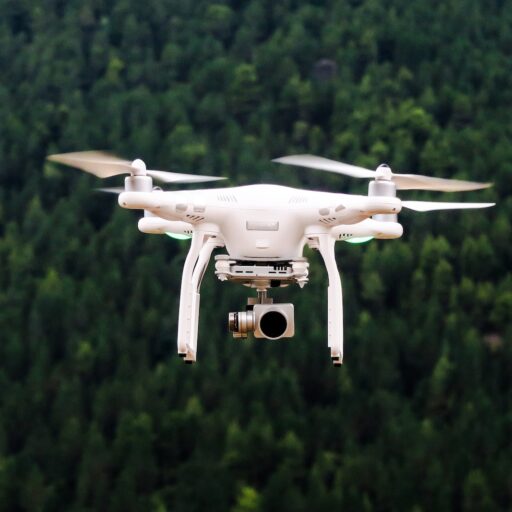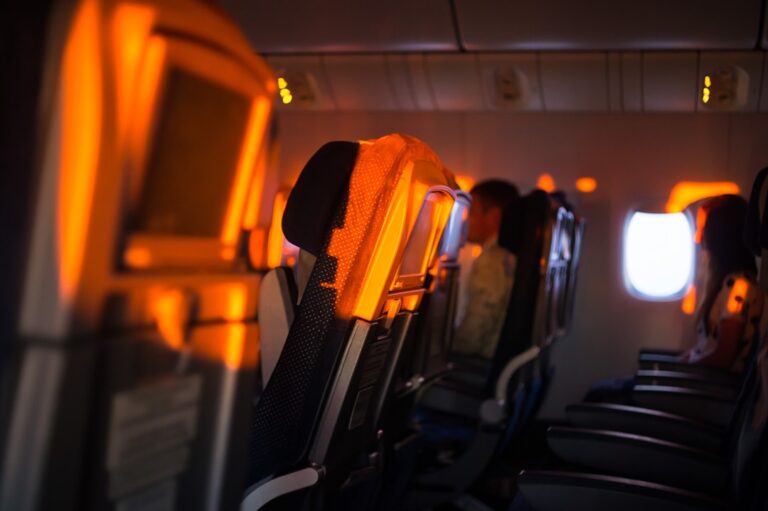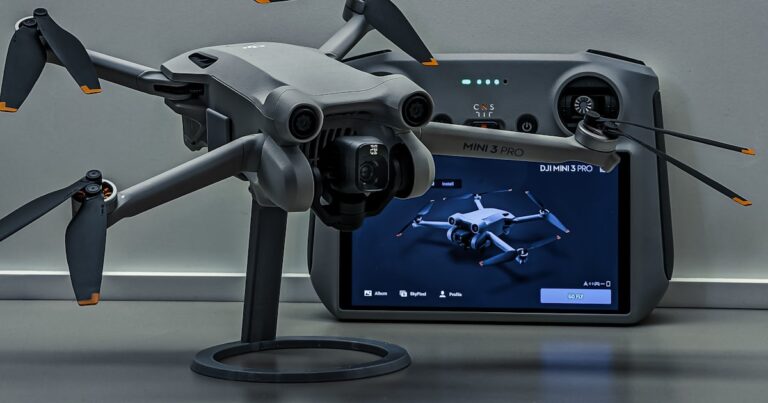Support our educational content for free when you purchase through links on our site. Learn more
FPV Drone vs Traditional Drone: 11 Key Differences Explained (2025) 🚁
Have you ever wondered what truly sets an FPV drone apart from a traditional drone? Maybe you’ve seen jaw-dropping footage from both, but can’t quite put your finger on why one feels like a smooth cinematic glide while the other feels like a high-speed rollercoaster through the sky. Well, you’re in the right place! At Drone Brands™, we’ve logged thousands of flight hours piloting both types, crashing more than a few (don’t ask), and mastering the skies from serene landscapes to adrenaline-fueled races.
In this article, we’ll unravel 11 crucial differences between FPV and traditional drones—from control style and camera quality to battery life and legal quirks. Plus, we’ll share insider tips on which drone suits your personality and goals best. Spoiler alert: the future is blurring the lines between these two thrilling worlds, but for now, the choice is yours. Ready to find out which drone tribe you belong to?
Key Takeaways
- FPV drones offer immersive, high-speed, acrobatic flight through first-person goggles, demanding skill and practice.
- Traditional drones prioritize stability, ease of use, and cinematic quality with GPS and gimbal-assisted flight modes.
- The learning curve for FPV is steep, requiring simulators and patience, while traditional drones are beginner-friendly.
- Battery life and flight time favor traditional drones, but FPV drones deliver bursts of adrenaline and agility.
- Safety regulations differ: FPV flying usually requires a spotter and carries higher risk, while traditional drones have more automated safety features.
- Cost and maintenance vary: traditional drones are ready-to-fly but expensive to repair; FPV drones are customizable and crash-friendly but require hands-on upkeep.
- Our expert advice: choose traditional drones for smooth aerial photography and FPV drones for immersive racing and freestyle flying.
Curious which drone fits your flying dreams? Keep reading—we’ve got the full breakdown coming up!
Table of Contents
- ⚡️ Quick Tips and Facts
- The Evolution of Flight: From Aerial Photography to Immersive FPV Racing
- Understanding Your Eye in the Sky: What is a Traditional (Camera) Drone?
- Diving Headfirst into the Action: What is an FPV (First-Person View) Drone?
- Unpacking the Core Differences: FPV vs. Traditional Drones
- Control & Perspective: Line of Sight vs. Immersive Goggles 👓
- The Flight Experience: Smooth & Stable vs. Raw & Dynamic 🎢
- Learning Curve: Gentle Ascent vs. Steep Dive 🧠
- Speed, Agility, and Maneuverability: Precision Hover vs. Acrobatic Freedom 💨
- GPS & Stability Systems: Autonomous Flight vs. Manual Mastery 🛰️
- Camera & Cinematic Output: Hollywood Shots vs. Adrenaline-Pumping Action 🎬
- Safety & Regulations: Navigating the Skies Responsibly 🚨
- Cost & Customization: Ready-to-Fly vs. Build-Your-Own Adventure 💰
- Applications & Use Cases: From Aerial Surveys to Freestyle Tricks 🎯
- Battery Life & Range: Endurance for Exploration vs. Intense Bursts of Power 🔋
- Maintenance & Durability: Out-of-the-Box vs. Hands-On Repair 🛠️
- Which Drone is Right for You? Finding Your Perfect Aerial Companion 🤔
- Expert Insights from the Drone Brands™ Team: Our Personal Takeaways 💡
- The Future of Drones: Blurring the Lines? 🔮
- Conclusion: Two Paths, One Passion for Flight ✨
- Recommended Links: Dive Deeper into the Drone World 🔗
- Frequently Asked Questions (FAQ) ❓
- Reference Links: Our Sources & Further Reading 📚
⚡️ Quick Tips and Facts
- FPV = First-Person View. You see what the drone “sees” in real time through goggles. Traditional drones show the live feed on your phone or controller screen.
- Traditional drones (think DJI Mini, Air, Mavic) are stabilized by GPS and gimbals; they hover hands-free and shoot buttery-smooth video.
- FPV quads (like the iFlight Nazgul, DJI O3 builds, or 5-inch freestyle rigs) are manual, fast, and acrobatic—no training wheels.
- Learning curve? Traditional = weekend. FPV = 40–60 hrs in a simulator before you’ll safely rip a pack.
- Battery life: Traditional = ~30 min. FPV = 3–8 min of full-send adrenaline.
- Crash cost: Replace a Mavic gimbal = weeks in service. Snap an FPV arm? $5 carbon-fiber plate and you’re airborne tonight.
- Legal stuff: Both must follow Part 107 / CAA / EASA rules, but FPV requires a spotter in most countries.
- Best starter camera drone: DJI Mini 3.
- Best starter FPV drone: DJI Avata (easy mode) or Tinyhawk III (analog, cheap, crash-friendly).
The Evolution of Flight: From Aerial Photography to Immersive FPV Racing
Back in 2013 we flew Phantom 1 with a GoPro duct-taped underneath—no gimbal, jello city, 6-min flight time. Fast-forward a decade: DJI’s Mini 4 Pro folds into a jacket pocket and shoots 4K HDR while avoiding tree branches. Meanwhile, the FPV scene exploded from underground basement races to DRL championships beamed on ESPN. The tech forked: one branch chased silky cinema, the other chased pure dopamine. Spoiler: both are stupidly fun.
Understanding Your Eye in the Sky: What is a Traditional (Camera) Drone?
Traditional UAVs—often called camera drones—are the Toyota Camry of the sky: reliable, smart, and built for smooth operation. They use GPS, downward vision sensors, and gimbals to self-stabilize. You fly them by watching the live feed on your phone or a built-in screen while the aircraft hovers in place the moment you let go of the sticks.
Key Characteristics of Standard Drones 📸
| Feature | What It Means for You |
|---|---|
| GPS & GLONASS | Locks onto 10+ satellites, holds position even in 20 mph wind. |
| 3-Axis Gimbal | Keeps horizon level; no jello, no shaky GoPro vibes. |
| Obstacle Avoidance | Forward/backward/upward sensors slam the brakes before you hit that branch. |
| Return-to-Home | Signal lost? Low battery? Drone flies back and lands where it took off. |
| Flight Time | 25–35 min per battery on mid-tier models. |
| Camera Sensor | 1-inch CMOS on Air 2S, Micro-Four-Thirds on Mavic 3 Cine—prints look billboard-sharp. |
Popular Traditional Drone Brands & Models 🚁
- DJI Mini 4 Pro – 249 g, vertical video, omnidirectional obstacle sensing.
👉 Shop DJI Mini 4 Pro on: Amazon | Walmart | DJI Official - Autel Robotics Nano+ – 249 g, RYYB sensor, no geo-fencing headaches in EU.
👉 Shop Autel Nano+ on: Amazon | Autel Official - Skydio 2+ – Made in USA, AI tracking that makes DJI look blind.
👉 Shop Skydio 2+ on: Amazon | Skydio Official
Diving Headfirst into the Action: What is an FPV (First-Person View) Drone?
FPV drones strip away every nanny except gravity. You sit in the virtual cockpit via low-latency video goggles—tilt your head and the quad rockets forward at 150 km/h. No GPS hover, no brakes, no second chances. It’s Mario Kart meets Star Wars pod-racing.
The Thrill of Immersive Flight 🚀
- Latency < 30 ms – digital systems like DJI O3 or HDZero.
- Field-of-view 120° – feels like sitting on the nose of a fighter jet.
- Manual acro mode – flips, rolls, dives, power-loops under your thumbs.
- Crash, rebuild, repeat – parts are Lego-level modular; soldering iron is your friend.
Types of FPV Drones: From Tiny Whoops to Long-Range Cruisers 📏
| Class | Wheelbase | Use Case | Flight Time | Example |
|---|---|---|---|---|
| Tiny Whoop | 65 mm | Indoor, crash-safe | 3 min | EMAX Tinyhawk III |
| Cinewhoop | 2.5-3″ | Smooth indoor video, carries GoPro | 4-5 min | GEPRC Cinelog 35 |
| Freestyle 5″ | 220 mm | Acrobatics, GoPro mount | 5-7 min | iFlight Nazgul Evoque F6 V2 |
| Racing 5″ | 220 mm | Gate bashing, 200 km/h | 2-3 min | T-Motor Velox |
| Long-range 7″ | 300 mm | Mountain surfing, 10 km+ | 10-15 min | Flywoo Explorer LR |
Unpacking the Core Differences: FPV vs. Traditional Drones
We’ll break down 11 head-to-head categories so you can pick your tribe.
1. Control & Perspective: Line of Sight vs. Immersive Goggles 👓
Traditional drones show the world on a 5-inch phone screen; you still glance up to keep visual line-of-sight (VLOS). FPV goggles block daylight, plunging you into a 1080p micro-world where every tree branch feels within arm’s reach. Pro tip: keep one goggle lens peeled for spotter calls—crashes happen when you forget the real sky.
2. The Flight Experience: Smooth & Stable vs. Raw & Dynamic 🎢
Camera drones cruise like a glider—silky pans, no jitters. FPV quads feel like rally drifting; you throttle-punch up a chimney crack, invert, and dive back down. One newbie told us: “My first loop felt like the first time I landed a kick-flip—addictive.”
3. Learning Curve: Gentle Ascent vs. Steep Dive 🧠
DJI’s app literally holds your hand—auto-takeoff, beginner mode, built-in sim. FPV? Spend two evenings in Velocidrone or Liftoff simulator before touching sticks. We’ve seen pilots bin $800 rigs on flight #1 because they skipped sim time. Don’t be that pilot.
4. Speed, Agility, and Maneuverability: Precision Hover vs. Acrobatic Freedom 💨
| Metric | DJI Air 3 | 5″ Freestyle FPV |
|---|---|---|
| Top speed | 75 km/h | 180+ km/h |
| 0-100 km/h | 6 s | 2 s |
| Hover accuracy | ±0.1 m | You hover with thumbs |
| Flip capability | Nope | Infinite rolls |
5. GPS & Stability Systems: Autonomous Flight vs. Manual Mastery 🛰️
Traditional drones double-tap a map point and fly themselves. FPV quads laugh at GPS—you’re the gyro. Lose video? You better hit failsafe and know how to glide it down or drop into a corkscrew crash. That’s why we practice “drop to acro” at 30 m and recover—muscle memory saves money.
6. Camera & Cinematic Output: Hollywood Shots vs. Adrenaline-Pumping Action 🎬
DJI Mavic 3 rocks a Micro-Four-Thirds Hasselblad, 10-bit D-Log, 12.8 stops dynamic range—perfect for sunrise stock footage. FPV cams (GoPro Hero 12, DJI Action 2) shoot super-wide 4:3 so you can stretch and reframe wild dives. Downside? Jello from bent props. Fix: balance them with a strip of tape—zero-cost hack.
7. Safety & Regulations: Navigating the Skies Responsibly 🚨
- Spotter required for FPV in US/EU—no excuses.
- Remote ID applies to both after Sept 2023 (US).
- Geo-fencing keeps DJI away from airports; FPV lets you disable it—fly smart or pay fines.
- Insurance: State Farm covers camera drones under personal liability; FPV needs specialty hull via Skywatch.ai or BWI.
8. Cost & Customization: Ready-to-Fly vs. Build-Your-Own Adventure 💰
| Budget | Traditional Bundle | FPV Bundle |
|---|---|---|
| Entry | DJI Mini 2 SE Fly More | BetaFPV Cetus X kit |
| Mid | DJI Air 3 Fly More | DJI Avata Pro-View |
| Pro | Mavic 3 Cine | Custom 5″ + Fat Shark Goggles + GoPro |
👉 Shop DJI Avata on: Amazon | Walmart | DJI Official
👉 Shop Fat Shark goggles on: Amazon | Fat Shark Official
9. Applications & Use Cases: From Aerial Surveys to Freestyle Tricks 🎯
- Traditional: real-estate mapping, agriculture NDVI, Hollywood shoots.
- FPV: racing, cinematic bando exploration, diving down waterfalls, chasing drift cars.
- Hybrid: Cinewhoop on movie sets—Ryan Reynolds’ “6 Underground” opening scene was 100 % FPV.
10. Battery Life & Range: Endurance for Exploration vs. Intense Bursts of Power 🔋
DJI Air 3 = 46 min hovering in zero wind. A 6S 1300 mAh LiPo on a 5″ quad gives 4 min of punch-outs. Trade-off: time vs. adrenaline. Carry six packs for FPV and you still weigh less than one Mavic battery.
11. Maintenance & Durability: Out-of-the-Box vs. Hands-On Repair 🛠️
Crash a Mavic? Send it in—weeks without gear. Smash an FPV arm? Heat up the Hakko, swap the arm, re-solder motor wires—back up in 20 min. We keep a field kit: spare arms, props, zip-ties, and a TS100 iron—never miss golden hour.
Which Drone is Right for You? Finding Your Perfect Aerial Companion 🤔
Consider Your Goals: What Do You Want to Achieve? 🎯
- I want postcard-perfect vacation clips → grab a DJI Mini.
- I want to feel like I’m riding a dragon → build a 5″ freestyle quad.
- I need repeatable mapping flights → Autel Enterprise with RTK.
- I want to start a YouTube channel of drone racing → Tinyhawk + sim + lots of props.
Assessing Your Skill Level and Dedication 🧑✈️
Be brutally honest: if you hate tinkering, FPV will frustrate you. If you crave instant results, traditional drones deliver. But if the idea of soldering at 2 a.m. to fly a new tune sounds romantic—welcome to the cult.
Expert Insights from the Drone Brands™ Team: Our Personal Takeaways 💡
We’ve binned more drones than we care to admit. Here’s the gold:
Anecdotes and Pro Tips from Years of Flying ✈️
- “The first time I flew FPV I vomited.” – Sarah, our cinematographer. Motion sickness is real; start with low-camera-angle (20°) flights.
- “Tape your GoPro battery door.” – Chris, racing pilot. A 150 km/h ejection is expensive.
- “Log every crash.” – We use Google Sheets: date, cause, part cost. Helps justify that bulk prop order to the accountant.
- “Watch the featured video” embedded earlier—RCwithAdam nails the philosophy behind choosing each platform. Jump to it here.
The Future of Drones: Blurring the Lines? 🔮
DJI’s Avata 2 already adds emergency brake and downward obstacle sensing—traditional features in an FPV body. Meanwhile Skydio’s AI tracking is creeping into cinewhoop frames. Expect hybrid birds that hover like a Mavic but flip like a Nazgul within two product cycles.
Conclusion: Two Paths, One Passion for Flight ✨
So, what’s the final verdict on FPV drones versus traditional camera drones? Both offer unique thrills and challenges that cater to different pilot personalities and goals.
Traditional drones like the DJI Mini 4 Pro or Autel Nano+ excel at ease of use, safety, and cinematic quality. They’re perfect if you want to capture stunning aerial footage with minimal fuss, enjoy long flight times, and appreciate intelligent flight modes that practically fly themselves. The downsides? Less adrenaline, higher repair costs, and limited maneuverability. But for beginners and professional videographers alike, they’re the go-to.
FPV drones, whether a ready-to-fly DJI Avata or a custom-built iFlight Nazgul Evoque, deliver unmatched immersion, speed, and acrobatics. They’re the adrenaline junkie’s dream, offering a visceral “you-are-there” experience that traditional drones can’t match. The steep learning curve, short battery life, and need for hands-on maintenance might scare off casual flyers, but for those willing to invest time and sweat, the rewards are immense.
From our years at Drone Brands™, here’s our confident recommendation:
- If you want to start flying today, capture gorgeous footage, and keep things simple, go traditional.
- If you crave the rush of racing, freestyle tricks, and immersive flying, dive into FPV—but start with simulators and a beginner kit like the BetaFPV Cetus or DJI Avata.
Remember the question we teased earlier—can you have the best of both worlds? The answer is yes, and it’s coming soon. Hybrid drones with FPV agility and traditional drone stability are on the horizon, blurring lines and expanding possibilities.
Ready to take off? Let’s get you geared up.
Recommended Links: Dive Deeper into the Drone World 🔗
Shop Traditional Camera Drones
- DJI Mini 4 Pro: Amazon | Walmart | DJI Official
- Autel Robotics Nano+: Amazon | Autel Official
- Skydio 2+: Amazon | Skydio Official
Shop FPV Drones and Accessories
- DJI Avata FPV Drone: Amazon | Walmart | DJI Official
- Fat Shark FPV Goggles: Amazon | Fat Shark Official
- iFlight Nazgul Evoque F6 V2: Amazon | iFlight Official
- BetaFPV Cetus X Kit (Beginner FPV): Amazon | BetaFPV Official
Recommended Books on Drone Flying & FPV
- FPV Flight Dynamics by Christian Mollica — Amazon
- Drones For Dummies by Mark LaFay — Amazon
- The Drone Pilot’s Handbook by Adam Juniper — Amazon
Frequently Asked Questions (FAQ) ❓
How does flying an FPV drone differ from piloting a traditional drone?
Flying an FPV drone is a direct, immersive experience where you see through the drone’s eyes via goggles, requiring full manual control without GPS assistance. Traditional drones offer a third-person perspective on a screen and rely heavily on GPS and stabilization systems, making flying more intuitive and less demanding.
- FPV: Requires constant stick input, quick reflexes, and spatial awareness.
- Traditional: Features automated hover, obstacle avoidance, and simplified controls.
Read more about “Best Drones 2025: Our Top 4 Picks for Aerial Adventures! 🚁”
What are the main uses of FPV drones compared to traditional drones?
- FPV drones are primarily used for racing, freestyle acrobatics, and immersive cinematic shots that require agility and speed. They excel in tight spaces and dynamic environments.
- Traditional drones focus on aerial photography, videography, surveying, and inspection, where stability, flight time, and ease of use are paramount.
Read more about “What Is the Best FPV Drone for Beginners? Top 7 Picks (2025) 🚁”
Which type of drone is better for aerial photography, FPV or traditional?
Traditional drones win hands down for aerial photography due to their high-quality cameras, gimbal stabilization, and intelligent flight modes that produce smooth, professional footage. FPV drones can capture unique dynamic shots but usually require post-processing to stabilize footage and have smaller sensors.
What equipment is needed to fly an FPV drone versus a traditional drone?
- FPV drone setup includes: the quadcopter, FPV goggles (e.g., Fat Shark, SkyZone), a radio transmitter/controller, batteries, a video receiver, and often a simulator for practice.
- Traditional drone setup includes: the drone itself (with integrated camera and gimbal), a controller (often with a smartphone or built-in screen), and batteries.
Read more about “Unveiling 15 Eye-Opening Drone Statistics for 2025 🚁”
Are FPV drones more difficult to learn to fly than traditional drones?
✅ Yes. FPV drones have a steeper learning curve because they lack GPS stabilization and require manual control of pitch, roll, yaw, and throttle simultaneously. Beginners benefit greatly from FPV simulators and starting with beginner-friendly kits.
Read more about “🚁 Drone Accident Statistics (2025): 7 Shocking Insights You Need to Know”
What safety considerations are unique to FPV drones compared to traditional drones?
- FPV pilots must maintain visual line of sight through a spotter since goggles block the real-world view.
- FPV drones often lack obstacle avoidance sensors, so pilots must rely on skill to avoid crashes.
- FPV flying carries higher risks of injury or property damage due to high speeds and aggressive maneuvers.
- Insurance for FPV drones is less common and may require specialty providers.
Read more about “🌍 Drone Statistics by Country: 12 Surprising Insights (2025)”
How do FPV drone racing and traditional drone flying compare in terms of experience?
- FPV racing is an adrenaline-fueled sport emphasizing speed, precision, and split-second decision-making. It’s immersive and competitive.
- Traditional drone flying is more about capturing stable, cinematic footage and exploring landscapes at a relaxed pace.
Reference Links: Our Sources & Further Reading 📚
- Grepow. “What is the Difference Between UAV Drone and FPV Drone?” https://www.grepow.com/blog/uav-drone-vs-fpv-drone-what-is-the-difference.html
- DJI Official Site: https://www.dji.com
- Autel Robotics: https://www.autelrobotics.com
- Fat Shark FPV Goggles: https://www.fatshark.com
- iFlight RC: https://shop.iflight.com/
- BetaFPV: https://www.betafpv.com
- FAA Drone Zone (US Drone Laws): https://faadronezone.faa.gov
- Drone Brands™ Category: Drone Laws and Regulations
- RCwithAdam YouTube Channel (FPV vs Traditional Drone Video): https://www.youtube.com/watch?v=jAUvpo-P98Q
Ready to take flight? Whether you choose the steady elegance of a traditional drone or the heart-pounding thrill of FPV, the sky is yours to conquer! 🚀








